Programming project 2
Download the archive pp2.zip. It contains all the files for this project.
Recursive drawing
The file drawing.py contains a function draw_front that generates the following fractal drawing (shown here for levels 1, 2, 3, and 4):

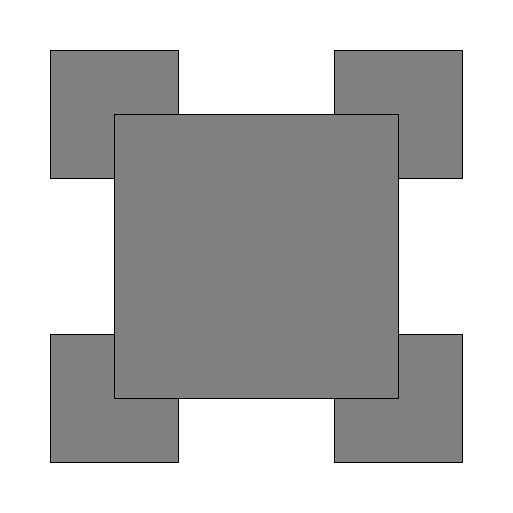
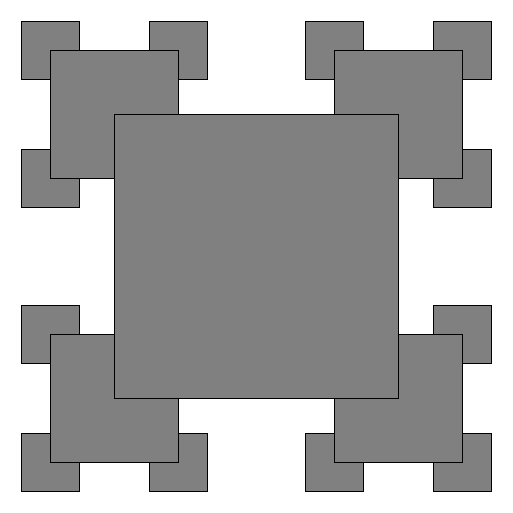
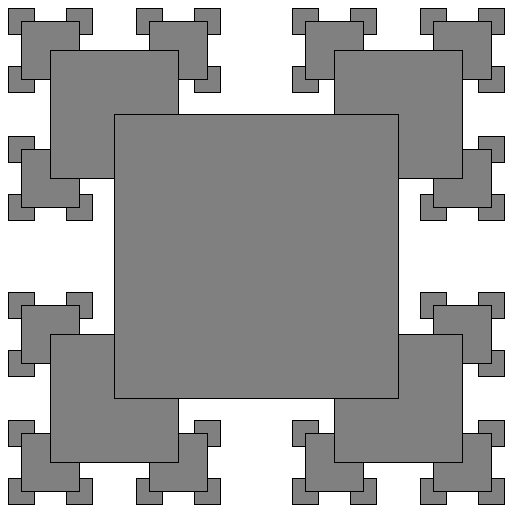
draw_order must produce the following drawing (again shown for levels 1, 2, 3, and 4):

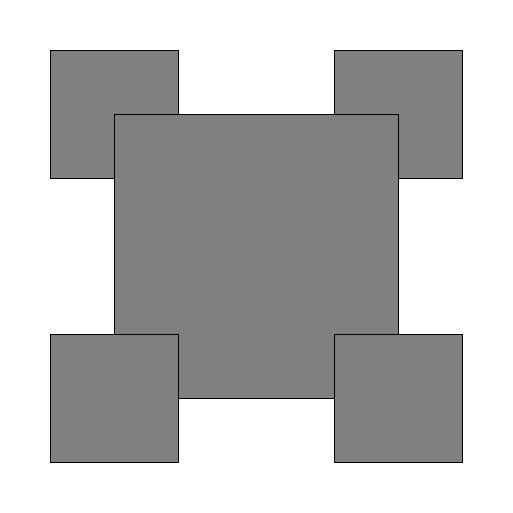
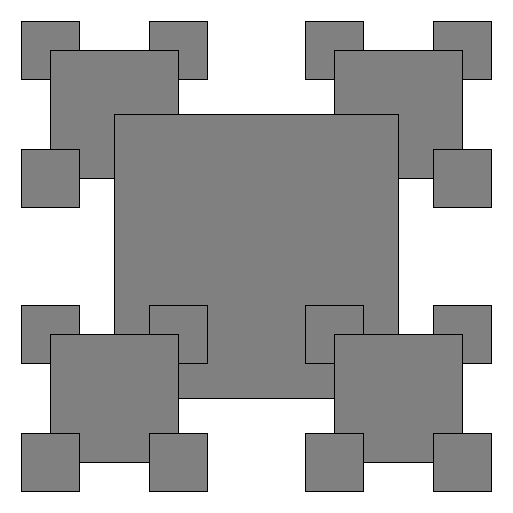
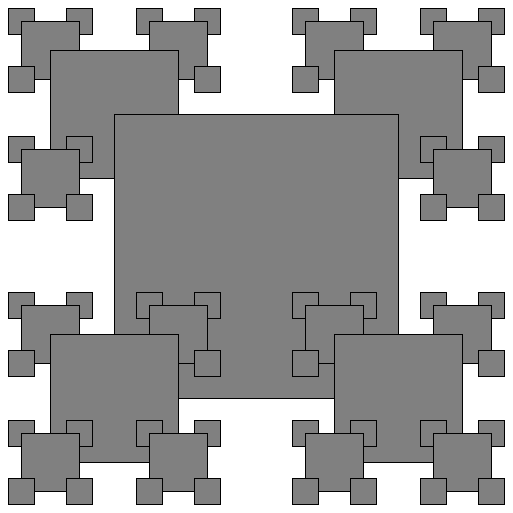

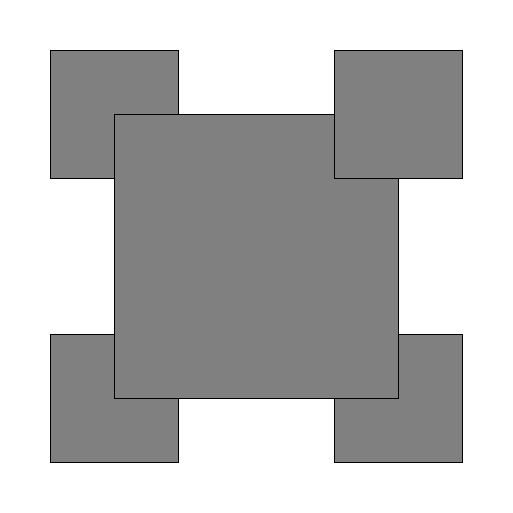
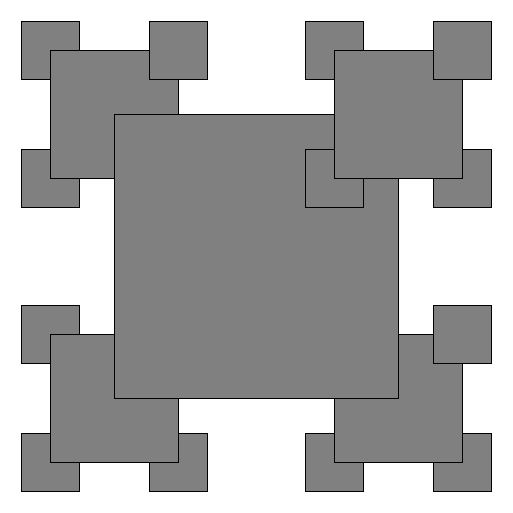
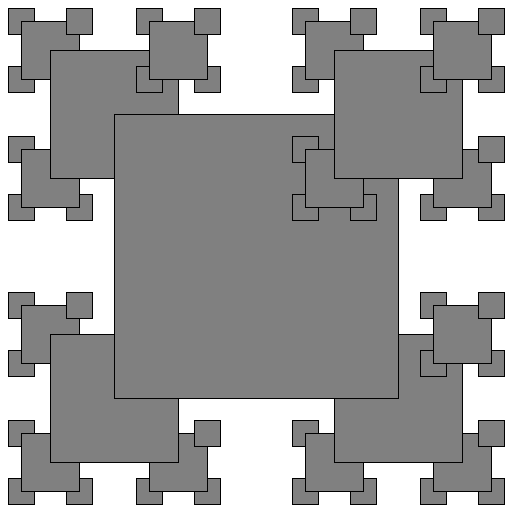

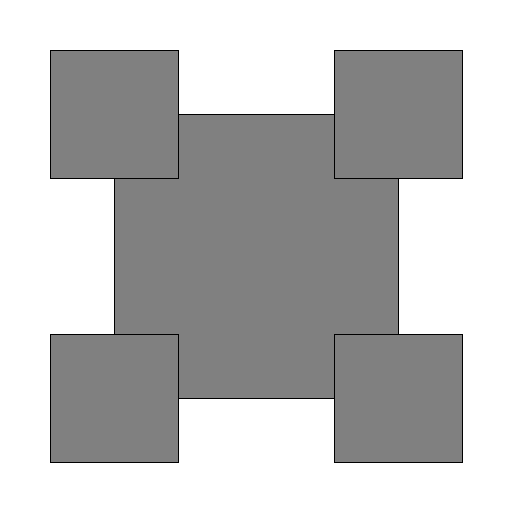
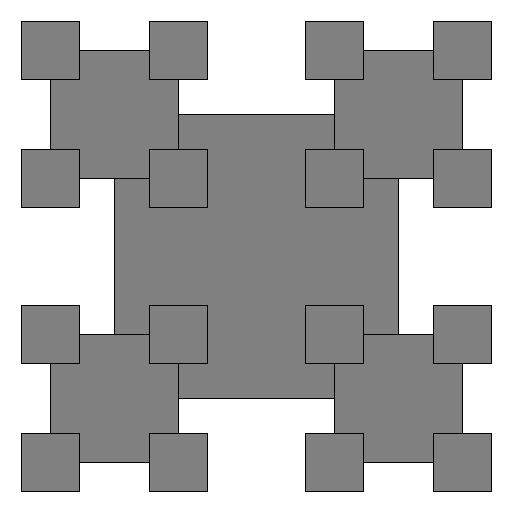
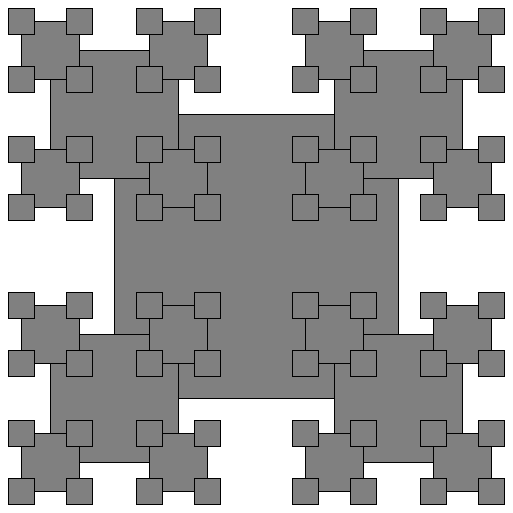
Sine and cosine
In our calculator program we learnt about indirect recursion, where function f calls function g, and function g calls function f (possibly with more levels in between). In this task we practice using indirect recursion:
Maybe you have wondered how functions like sin(x) and cos(x) are implemented in Python (and other programming languages). Here is one possible implementation. You know from high school or your calculus course that
Implement the functions sine and cosine in the file sine.py to use these indirectly recursive formulas.
The base case happens when \(x\) is very small, that is \(-0.01 < x < 0.01\). For such small values of x, use the approximations
The script already contains a tabulate function that tabulates your values of sine and cosine for \(x\) between \(-2\) and \(2\), with steps of \(0.1\), and compares your values with the result of the built-in functions math.sin and math.cos. How precise are your functions?
If you needed to improve the precision of your functions, how would you do it?
Submission: Upload your file sine.py to the submission server.
Towers of Hanoi, clockwise
Consider the following variant of the towers of Hanoi problem. As usual, we are given three pegs A, B, C. At the start, there are \(n\) disks on peg A. The problem is to move them all to peg B.
However, this time a disk can only move clockwise: from peg A to B, from peg B to C, or from peg C to A. All other moves are not allowed. For instance, it is not allowed to move a disk directly from peg A to peg C.
Of course all the other rules are still valid: You can only move the top disk on each pole, and a disk is not allowed to lie on top of a smaller disk.
Fix the implementation of the function hanoi_cw in the file clockwise.py (you can make additional functions, if you find them necessary). The current implementation is simply the original version of Towers of Hanoi (where counter-clockwise moves are allowed).
Like in the original version, your function should print the output using print statements in the following format:
Move disk 1 from A to B Move disk 1 from B to C Move disk 2 from A to B Move disk 1 from C to A Move disk 1 from A to BThis is actually a correct solution for \(n = 2\).
You must follow this format exactly, otherwise the unit tests will not accept your solution.
You can run the function directly from clockwise.py:
$ python3 clockwise.py 3
The script test_clockwise.py implements unit tests for hanoi_cw. It tests that the output is correct for a number of different values of \(n\), and prints out the number of moves used.
You will achieve partial credit for this problem if your solution works with the following number of moves (or better):
$ python3 test_clockwise.py For 1 disks you needed 1 moves For 2 disks you needed 5 moves For 3 disks you needed 21 moves For 4 disks you needed 85 moves For 7 disks you needed 5461 moves For 10 disks you needed 349525 moves . ---------------------------------------------------------------------- Ran 1 test in 1.202s OK
For full credit, however, you need to achieve the following number of moves (this is harder):
$ python3 test_clockwise.py For 1 disks you needed 1 moves For 2 disks you needed 5 moves For 3 disks you needed 15 moves For 4 disks you needed 43 moves For 7 disks you needed 895 moves For 10 disks you needed 18271 moves . ---------------------------------------------------------------------- Ran 1 test in 0.070s OK
You will get bonus points if you can beat this solution.
Submission: Upload your file clockwise.py to the submission server.